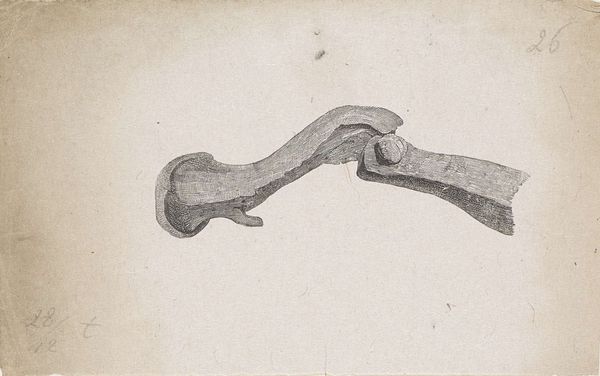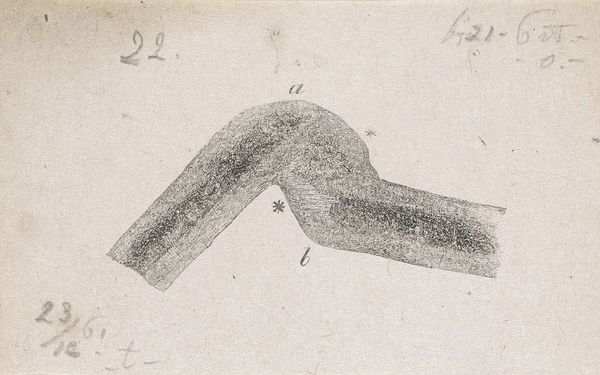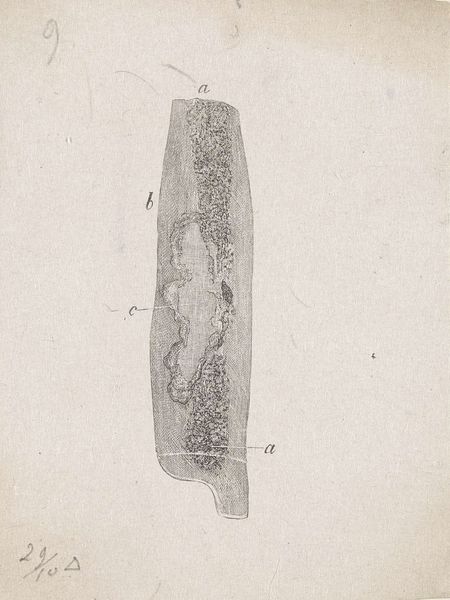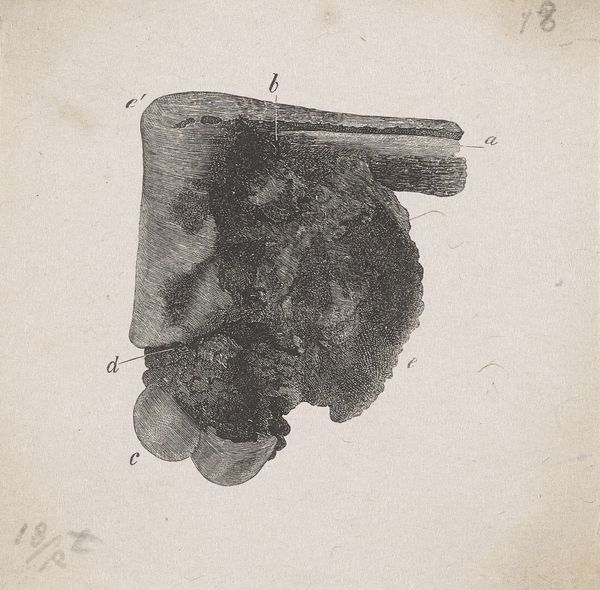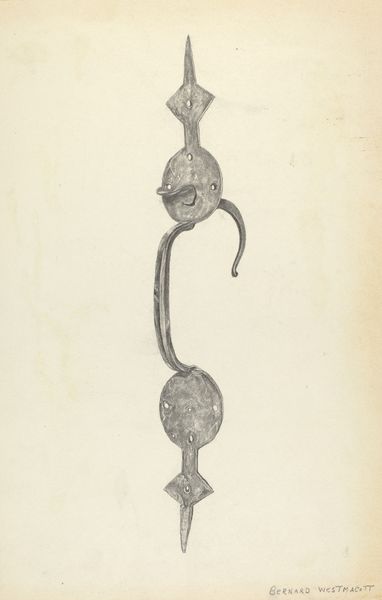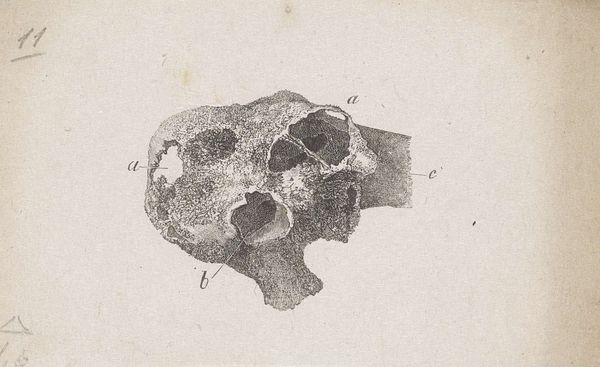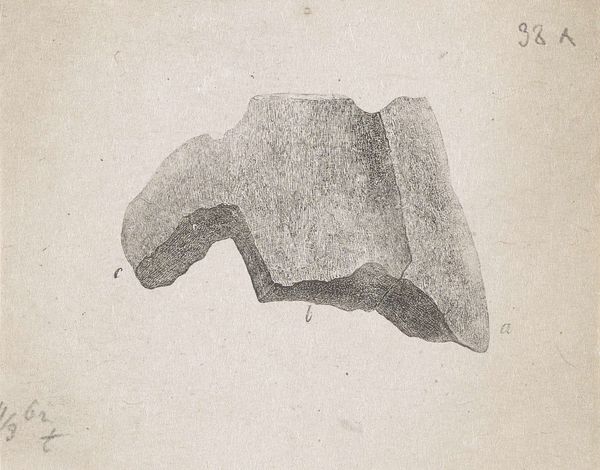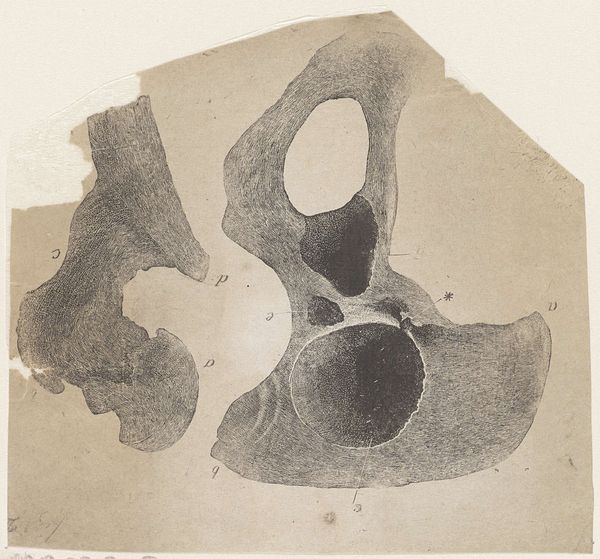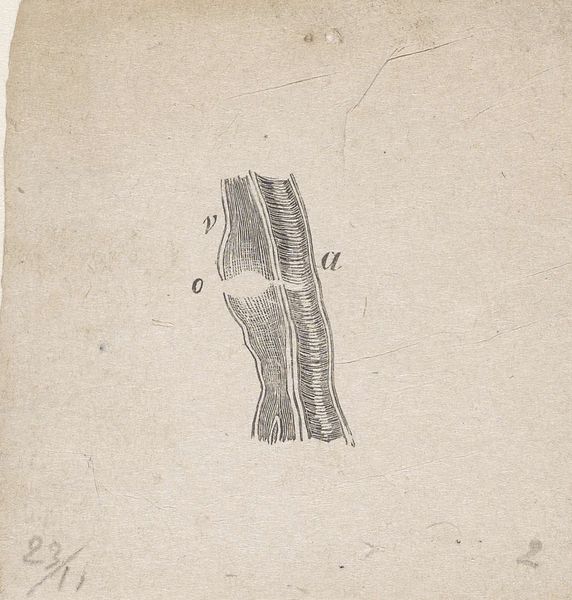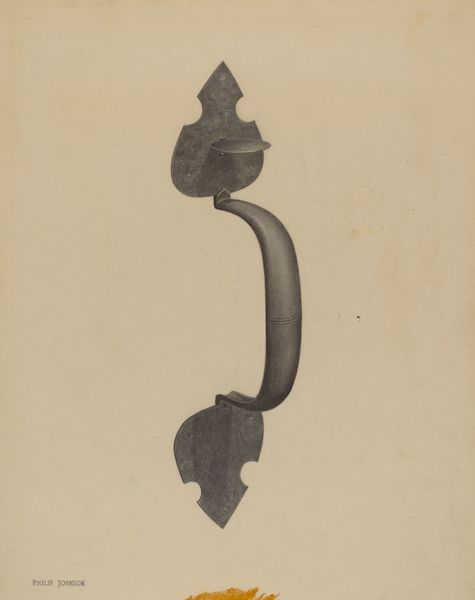
drawing, pencil, graphite
#
drawing
#
pencil drawing
#
pencil
#
graphite
#
academic-art
#
realism
Dimensions: height 52 mm, width 92 mm
Copyright: Rijks Museum: Open Domain
Editor: So, here we have Isaac Weissenbruch’s "Menselijk bot met een afwijking," a pencil and graphite drawing done sometime between 1836 and 1912. It’s fascinating, the level of detail he achieves with such simple materials. It really focuses your attention on the bone itself. What strikes you about it? Curator: What intrigues me most is how the labor of representation transforms a clinical object into something aesthetically engaging. The drawing material – graphite, pencil – themselves point to a readily available, industrial mode of production. Consider the accessibility; graphite production allows for the widespread study and documentation of the human body, moving anatomical knowledge from exclusive institutions to a broader public sphere. It begs the question: for whom was this drawing created, and for what purpose? Was this for scientific study or artistic exploration, or something in between? Editor: That's an interesting point! I hadn't considered the accessibility aspect of the materials themselves. I guess I just thought of drawing as "art." Do you think the artist’s intention changes the meaning of the drawing, or is the act of creating the drawing, the labor itself, more significant? Curator: Intention is tricky. The visible labor – the delicate cross-hatching, the meticulous rendering of the bone’s texture – points to a process deeply invested in observation and skill. However, focusing solely on the artist overlooks the broader context. This image also circulates scientific knowledge; therefore, this is labor performed for a patron. So what type of labor is more visible? Editor: That gives me a lot to think about when I look at drawings now. It is never just the object but all of these additional levels on who has created it, why they created it, and for whom it was created. Curator: Precisely. By examining the means of production and social context, we can see beyond the surface and understand the complex layers of meaning embedded within.
Comments
No comments
Be the first to comment and join the conversation on the ultimate creative platform.
